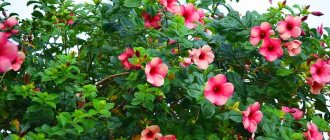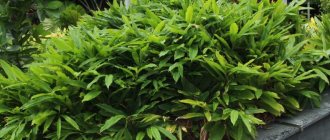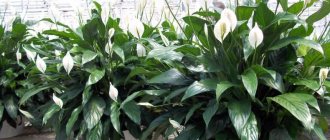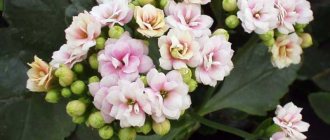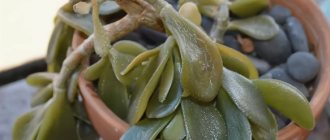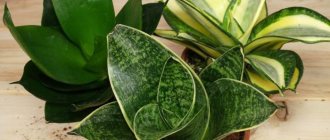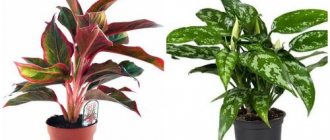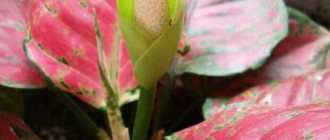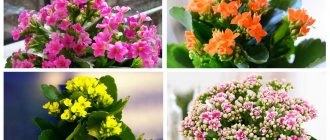Main reasons
- Lack of light - the plant stretches upward, and the leaves of Kalanchoe turn yellow or their tips dry out. Just move the plant to a brighter room.
- Stagnant air causes leaves to fall, ventilate the room more often.
Sunburn or severe crowding lead to spots on the leaves. Place the pots at a greater distance from each other and shade them.- Lack of nutrients - stops growth and drops leaves. Replant the plant in new soil and fertilize it.
- An excess of peat or nitrogen in the soil leads to leaf curling. Just replant in new, properly prepared soil.
- Excessive watering or infection with root rot - the leaves become soft and fall off. Reduce watering and treat the root system.
- Excessive direct sunlight leads to complete yellowing of the plant. Rearrange the plant pot or shade it.
- If the Kalanchoe dries out or its leaves wither, it means that there has been no watering for a long time, the composition of the soil is incorrect, or there are pests in it. Water the plant in a timely manner, review the composition of the soil and check for the presence of insects.
You can read more about why Kalanchoe does not bloom here.
Leaf diseases
Yellowing of leaves
Why does Kalanchoe turn yellow and what to do about it? This usually happens after flowering. The stem is stretched and exposed from below.
This is a sign of exhaustion. New soil and intensive fertilizing are needed.
Replant the plant in a new substrate. After transplanting, feed it with Zircon solution.
Why do Kalanchoe leaves often turn yellow and dry at the tips ? This is primarily due to a lack of boron and the flower needs to be fed with fertilizer containing a high content of this substance.
Curling leaves
Why do Kalanchoe leaves curl? Kalanchoe leaves curl, most likely due to damage to the root system.
The reason for this is excess water. Remove the plant from the pot and inspect the roots.
Damage must be cut out, the healthy part must be washed in a weak solution of potassium permanganate.
Then treat the cuts with charcoal powder and plant the surviving part in fresh soil.
Why do Kalanchoe leaves curl?
If the leaves curl and at the same time change color to burgundy, it means that the plant is in a place that is too lit and receives direct rays for a long time during the day.
In this case, shade the flower and spray it during the day.
The leaves are falling
Why does Kalanchoe shed its leaves? Kalanchoe fall off due to improper maintenance in winter. This happens when the flower is kept in a stuffy room, next to heating radiators.
If you notice this, move it to a cooler room. It is advisable that the temperature in it should not exceed 15 degrees. In this case, the winter will pass without losses.
So why Kalanchoe leaves fall Another reason for this may be coolness that is not combined with humidity - mold or black spots . It's a fungus. Fungicides will help destroy it.
Why does Kalanchoe wither?
What to do if Kalanchoe withers ? Why does the plant have soft leaves? The reason depends on the age of the plant.
If it is young, then such signs indicate a lack of water. But this is not necessarily related to quantity.
If the root is rotten, then moisture does not enter the leaves, but accumulates in the soil.
This can also happen with irregular watering.
If the soil dries out too much and is then watered too much, the plant may also wilt.
Watering should be done when dry, not dry.
In an adult Kalanchoe, the leaves wither due to aging. Rejuvenate him. Separate the cuttings and replant.
Black spots on leaves
If Kalanchoe leaves turn black, this indicates the presence of a fungus. This occurs due to an excess of moisture, the soil does not dry out and its aeration is impaired.
Change the soil, increase its looseness by adding sand. Adjust the watering in the future and then the leaves of the Kalanchoe will not turn black.
Brown spots on leaves
Dry brown crusts on the leaves are a disease of Kalanchoe called dropsy . It arises from temperature changes combined with waterlogging.
Move the Kalanchoe to a warmer, drier place and reduce the amount of water used. Make sure that cold air does not come into contact with it, for example, when ventilating.
White coating on leaves
The Kalanchoe is covered with a white coating due to the fact that the water for irrigation is too hard . It contains salts and lime impurities.
It needs to be softened: settled, filtered. The best remedy is freezing and then thawing.
To soften it, once a month you can add citric acid to it on the tip of a knife at the rate of one liter. You can add three percent vinegar - 1 teaspoon per liter. The liquid with acid is left to sit for two days so that all the salts settle, then drained and used for irrigation.
The leaves have fallen
Basically, Kalanchoe drops its leaves due to the fact that the plant freezes . This often happens when overflowing in a cold room. Move the Kalanchoe to a warm, dry room.
If it does not recover, change the soil. Plant the plant in almost dry soil and water only after 1-2 days, when the excess moisture has gone.
Kalanchoe grows upward and does not bloom
A special feature of Kalanchoe is its abundant flowering in the first year of life.
So why does the flower then grow upward and not bloom? After the primary flowering, it enters a dormant phase. It begins to stretch upward and does not bloom , accumulating leaves. To make it produce new buds, you need to form a bush.
Cut off the tops and root them. You will get new plants, and old specimens will begin to accumulate strength for budding.
What to do if the Kalanchoe has stretched out ? Remove the top couple of leaves from such shoots. After this, new shoots will grow on them.
Do this until your flower becomes a lush, rounded bush.
To stimulate flowering, they also reduce daylight hours to 12 hours. Put the Kalanchoe in a dark place at 7 pm, and at 7 am put it back in the light.
Why do Kalanchoe have small leaves?
The leaves become smaller and dull due to lack of light. Kalanchoe needs bright light for as long as possible during the day.
We do not recommend keeping it away from the window or on north-facing windows. The size is also affected by the sufficiency of nutrients, so the plant needs to be fed regularly.
This is especially necessary during the period of bud formation and flowering, since at this time it needs a lot of strength. Fertilize once every 14 days.
Chewed leaves
Why does Kalanchoe have nibbled leaves? Sometimes holes appear on the leaves, as if someone had chewed out pieces. These are burns that occur when spraying in direct sunlight.
The drops act like lenses, and the sun burns through the delicate skin. These areas turn into small holes.
Leaf diseases and pests of Kalanchoe:
Diseases and control methods
- Powdery mildew - characteristic white spots with a fungal coating on the leaves. The reason is excessively dry and warm air. Water the plant more often and move it to a cool place. For treatment, spray with fungicides. If you react in time, the plant's health will be restored. Remember that powdery mildew spreads very quickly to other plants. Therefore, act immediately.
- Ring leaf spot - the stem of the plant rots and circular spots appear on the leaves. In this case, the flower begins to die and it is impossible to save it.
- Gray rot - sticky leaves with a gray coating, which later turn into mush. Replace the soil, water regularly, and maintain proper ventilation. For treatment, use fungicides and good temperature conditions.
- Late blight or late blight rot is brown spots or brown coating on the plant. This occurs due to poor ventilation and excess water in the soil. You need to reduce watering, select the right fertilizers, carry out preventive procedures and treat the plant with fungicides.
Reference. The plant is also often subject to stem rot - the trunk or stem turns black. This happens because your plant is frozen. The optimal temperature for the plant in winter is 15°C. It is important to calculate watering at this temperature.
Kalanchoe diseases - we treat the plant correctly
Popular among lovers of indoor flowers, Kalanchoe is a rather unpretentious plant .
However, problems in growing it still exist.
Almost all diseases of Kalanchoe leaves appear due to violation of maintenance conditions . It is worth noting that this plant loves diffused lighting and moderate watering. The article below discusses: pests, diseases (leaf diseases), as well as treatment of Kalanchoe with photos.
By providing it with the necessary care, you will achieve both proper development and flowering.
But if it starts to hurt, its leaves become stained, or you find small insects on it, you need to take immediate action.
Common Pests
- Aphids are the most dangerous enemy of Kalanchoe.
Appears mainly in spring. If measures are not taken in time, it will spread to neighboring plants. Aphids are small green or black insects that appear on leaves or stems. She takes the sap of the plant and infects it with her poison. Damaged areas are covered with a sticky substance that prevents the plant from breathing. At the initial stage, it is difficult to notice the infection, since the insects are very small and settle on the back of the leaf. It can only be detected due to the unhealthy appearance of the plant. It becomes dirty and deformed. To get rid of aphids, you need to trim off the affected areas and burn them. Treat the remaining plant with an insecticide. Repeat once a week for a month. You can also use green potassium soap: dilute it in water and wash the plant with the solution. Can be replaced with laundry soap. - Multiclawed mites are small glassy mites. When it appears, the leaves and petioles become covered with brown scabs, and the plant tissues harden and become distorted. Wash off the insects with soapy water and treat the plant with an insecticide.
- Scale insects and false scale insects are insects with a two-millimeter body, covered with wax on top. They form a coating (in which sooty fungus is formed) and an accumulation of insects on the plant. The leaves turn yellow, fall off, growth slows down, and flowering stops. For treatment, immediately remove all insects and wash the plant with soapy water. Before removing insects, treat them with alcohol. You can use folk remedies (wipe the plant with a cotton swab and alcohol, use garlic or an old toothbrush).
- Mealybug - an insect that feeds on the sap of Kalanchoe. It propagates the fungus “black mold”. If measures are not taken, the plant will die. The appearance is determined by the appearance of white waxy discharge. For treatment, use mineral oil to spray the leaves.
What does an insect look like?
It is difficult to see what a spider mite looks like with the naked eye. This is due to the small size of the insect: an adult individual barely reaches 5 mm in length. Insects can have different colors, depending on the variety (red, orange, green, etc.).
When examining a tick in detail through a magnifying glass, one can note the presence of small bristles on its long body, as well as several pairs of legs, with the help of which it deftly climbs leaves.
Pests hide in the soil of plants, under leaves or in the axils. It will not be difficult to notice a spider mite if it is actively reproducing and settling on a flower.
Let's consider the main types of pests that are found in human homes:
- Ordinary. The mite infects young shoots and the inside of leaves, easily spreading to other crops.
- Red. A distinctive feature of the tick is its bright red or orange color. Individuals are found less frequently than common insect species. They live on lemon trees and orchids.
- Atlantic. It is grown where there is high air humidity. Parasitizes exotic flowers: citrus trees, palms.
- Cyclomene is the most inconspicuous type of mite. It settles in flower tubers and on the inner surface of leaves. The parasite's web can be confused with ordinary dust, which complicates the process of pest control. The main condition for the reproduction and spread of the parasite is sufficient air and soil humidity.
Photo
And this is how leaf diseases and flower pests look in the photo.
Does a tick form a web?
A sign of the appearance of a common spider mite is the formation of a barely noticeable web on indoor plants. It is difficult to see the web with the naked eye due to its small size and excessive thinness.
Another symptom of flower damage by an arthropod pest is the presence of white spots on the inside of the leaves. The infected crop does not receive enough nutrients from the soil and eventually dies.
The danger of infection lies in the fact that female parasites during a short period of existence (up to 1 month) are capable of laying several hundred eggs, which remain viable for up to 5 years.
Masonry can be located in secluded places (soil, plant axils). For this reason, pest control takes a long time.
Important advice! It is advisable to isolate a houseplant purchased from a store from others for 2-3 weeks.
Proper care
- Proper watering is to water in small doses, avoiding excess water. Water no more than once every three days and after the soil dries out slightly.
- Spraying is not recommended. The plant does not like high humidity.
- The plant needs to be replanted at least once every two years (read about how to replant Kalanchoe in this article).
Recommendation. Replant by transshipment into identical soil. - Pay sufficient attention to the formation of the bush. Pruning is an integral part of the mandatory care of Kalanchoe (more information about pruning Kalanchoe can be found here).
- The optimal temperature is 15-35°C; at temperatures below plus 5°C it dies.
- Control the lighting - leave it in the sun until noon, then move it to the shade or cover it with a light cloth. In winter you don't have to move it.
- It is advisable to feed with special preparations for succulents or cacti.
Read more about how to care for a Kalanchoe so that it blooms here, and here we talked about how you can achieve abundant flowering after purchase.
This is how you need to care for a Kalanchoe flower at home.
Kalanchoe is a delicate plant that requires your care. If you provide it and pay constant attention to it, then the flower will delight you with its beauty and health.
What to do if there is a white coating on the leaves of Kalanchoe?
Recently I really panicked when I noticed a spreading white coating on the leaves of Kalanchoe. I admit honestly, there were some strange spots before, but I didn’t know that they would go away after I wiped them off with the Kalanchoe, but, as practice shows, I was wrong.
Kalanchoe, as I understand from numerous reviews, “loves” to get sick at home, which become ideal breeding grounds for diseases. Especially acute periods when Kalanchoe can get sick are spring or summer, when Kalanchoe begins to bloom and actively develop, then it can catch some kind of sore, because it is very vulnerable. Kalanchoe is affected by many pests and viral diseases, for example, scale insects or gray mold, but they are slightly different in description, and the most evil and ridiculous, unpleasant fungal disease, in my opinion, is only powdery mildew.
It is powdery mildew that causes such a hated white coating on the leaves of Kalanchoe! Removing it may not be so difficult for some people, but I really don’t like to waste time and deal with all the rigmarole, constantly removing white plaque from the leaves and carrying out special procedures, therefore, in my opinion, it would be better for Kalanchoe to be constantly protected and never caught these diseases, especially those that are fraught with further death of the plant.
The white coating on the leaves of Kalanchoe is the same fungus, which you also need to interact with carefully, because it is dangerous if the fungal spores get on the mucous membranes or respiratory tract of a person. Ideally, it is best to remove white dew with gloves and using tools and devices that you will no longer use in everyday life. It is also undesirable to leave everything to chance, because leaves that have been affected by white powdery mildew do not heal on their own - they simply die off after some time.
But if you are not afraid for the health of Kalanchoe (for some reasons unknown to me), you should start to worry, because powdery mildew is transmitted not only physically, but the spores of the fungus scatter throughout the entire territory, and then fall on neighboring plants and also infect. It turns out that you will have a little Chernobyl in your home, which tirelessly, day and night, destroys all living things in its area until you treat it (Kalanchoe plant).
To cure the white coating on the leaves of Kalanchoe, you need to water the plant very moderately, literally in small portions, and also carry out constant spraying with special preparations that reduce the degree of action of fungal spores and destroy them at the root, which ultimately helps to remove them. Spraying can be done with all the fungicides that you know or that can be recommended to you in the store, I didn’t particularly focus on this, because many drugs are suitable.
There are also a couple of tips on how you can protect your Kalanchoe from such unwanted guests - water moderately and that’s all. White bloom or powdery mildew loves a moist environment, so warmth, constant watering, and humid air become breeding grounds for powdery mildew on Kalanchoe leaves.
Please rate the material you read :)
Why do Howea leaves turn yellow?
In the wild, howea lives in the subtropics. But you should not rush to create too warm conditions for the plant and place the pot next to the radiator. This will definitely lead to yellowing of the foliage. The main reason for such changes is air humidity that is unsuitable for palm trees. Following the loss of leaves, it will stop growing and wither, and then die completely. The humidity for howea should be at least 65%.
These parameters can be achieved in several ways:
- regularly spray the plant and the space around it, at least once every 2 days;
- place several containers of water near the flowerpot;
- buy an air humidifier or decorative fountain.
As soon as the humidity in the room returns to normal, the palm tree will turn green again. Also, the cause of the yellowish tint of the leaves may be a lack of nutrients in the soil or an excess of calcium, which occurs when watering the plant with hard water. Therefore, it is better to use well-settled, filtered or melt water.

